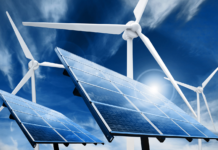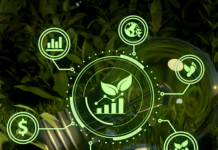
Over the past few decades, fiction writers and filmmakers have amassed an impressive array of apocryphal predictions, some not unlike the current coronavirus outbreak. In “Contagion,” Oscar-winner Steven Soderbergh presciently outlined a series of events bearing resemblance to COVID-19. Though the severity of the virus in the movie exhibited a higher fatality rate, the depiction of the jump, or transmission, across species from bat to pig to human looks spot on. Even so, thousands of other fictional scenarios from books and films will never come to pass. Forecasting, as they say, remains a treacherous business.
Still, given the unprecedented developments of recent days, it’s worth taking a moment to explore what conclusions to draw. In such a way, society might better prepare for an increasingly uncertain outlook. Examining prospective winners and losers, the result of long-term, even permanent changes, in behavior may provide useful insight going forward. For one, it’s indeed possible that things will never return to “normal.”
At the most basic level, the planetary population moves inexorably toward 9-12 billion people by the end of this century. As such, humans will find themselves living in ever-closer proximity to each other. This makes future pandemics caused by new, different strains of pathogens a stronger possibility than previously understood by policymakers.
Although early signs suggested social distancing would be a short-lived occurrence, daily updates continue to indicate that restrictions will grow and last much longer than first believed. The cancellation or postponement of events, whether conferences or sporting activities, the dramatic decreases in air travel, and general across-the-board drops in activity will all have a substantial and prolonged impact on economic activity.
So, who wins and who loses?
Clearly grocery and other essential retail businesses have and will continue to benefit, though recent runs on certain types of products such as hand sanitizer and toilet paper should abate as supply chains adjust and demand moderates. Looking back, the needless run on gasoline after Hurricane Harvey had no long-term effect on prices or availability at the pump.
In a few short weeks, online education has become the de-facto method of delivery at all levels — from K-12 to graduate school. Similarly, telecommuting, wherever feasible, now represents the de-facto work mode. Remote work arrangements will drive computer sales. Telecommunications sectors will increase investment in equipment and capacity. Home entertainment-related purchases will rise.
Demand for health care, delivered in the form of telemedicine will accelerate. Pharmaceutical product sales and distribution will migrate to mail order.
One interesting change will affect business schools. The evolution of supply chain management theory typically emphasizes efficiency and cost — no matter how far-reaching the scope of operations — making them vulnerable to unanticipated changes in sourcing or demand. Future MBA programs will incorporate resilience and adaptability into revised supply chain models de rigueur. Emphasis on local, regional and domestic networks will displace many international suppliers.
At the same time, services delivered virtually from worldwide platforms represent opportunities for growth. The nature of global trade will undergo upheaval as tangible product movement ebbs and services increase.
The two trillion dollar government rescue effort will curb stock buybacks and dividends payments for up to a year after loan repayment. This will temper share price gains that depended at least partially on such activity.
The coronavirus does not discriminate between rich and poor. High levels of social and economic inequality may assuage as a byproduct of ongoing developments. Delivery workers, for example, now protest for the right to greater safeguards and demand hazard pay. Further, noneconomic developments could include social unrest due to forced changes in lifestyles and unfamiliar work conditions that lack diversion.
While some sectors will clearly benefit, others will struggle for the remainder of the year, perhaps longer. Oil and gas companies, a few already teetering on insolvency with crude oil prices at $50 per barrel, will slash budgets and workforce as prices settle closer to $20. Reductions in traditional commuting, air travel and other forms of transport will keep a damper on energy prices.
The practice of social distancing combined with lingering fears about disease transmission will cause a decline in health club usage for an extended period. Cruise lines could see a permanent drop off in business. Fewer people will attend sporting events, with a corresponding decrease in concessions sales. Hotels and airlines are already distressed. Large gatherings of all kinds may be discouraged as a matter of policy, perhaps voluntarily avoided altogether. With fewer people commuting, auto sales might see a temporary fall. Difficulty showing houses to prospective buyers may slow the residential real estate market.
All in all, a mixed bag, with as many questions as answers. George Will once intoned that the future looks very much like the past — until it doesn’t. Recent events suggest precisely that. No one can know exactly what life will look like on the other side of this crisis, but almost certainly, it won’t be the same.
About the author: Thomas Tunstall, Ph.D. is the senior research director at the Institute for Economic Development at the University of Texas at San Antonio. He is the principal investigator for numerous economic and community development studies and has published extensively. Dr. Tunstall recently completed a novel entitled “The Entropy Model.”














